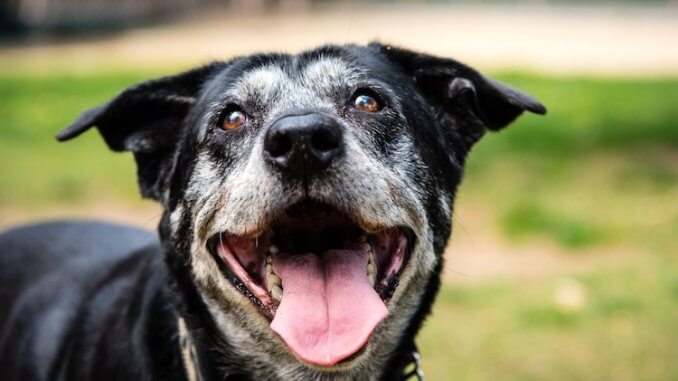
We have all heard the theory of dog years, your dog is 6, so that means he is 42 in human years. But, is this theory correct and where did it come from? Someone took the average lifespan of a dog (10 years) and the average lifespan of a human (70 years), and calculated that every dog year is the same as 7 human years.
What they didn’t consider is whether average lifespans change and what factors can impact aging in dogs.
A Dog’s lifespan is affected massively by genetics, environment, stress, nutrition, breed and size. One simple formula doesn’t work for all dogs.
Because of these variables, you need to use a dog age calculator (jump to our calculator) if you want to accurately convert from dog years to human years. Puppies have to do a lot of growing and developing in their first year and smaller breeds age much slower than large breeds too.
There is far too much to consider before we place a blanket-rule on how old our dogs are in human years, so let’s start with a calculator.
Dog Age Calculator
Convert Dog Years to Human Years
Curious to know how old your dog is in human years? You can use our calculator below to find out:
Enter your dog’s age and breed.
Your dog is 15 human years old!
Dog Age Chart
If you don’t want to use the calculator above, the below dog-years’ chart is a general guide that has been compiled for understanding how old your dog is in human years.
Aging in Dogs
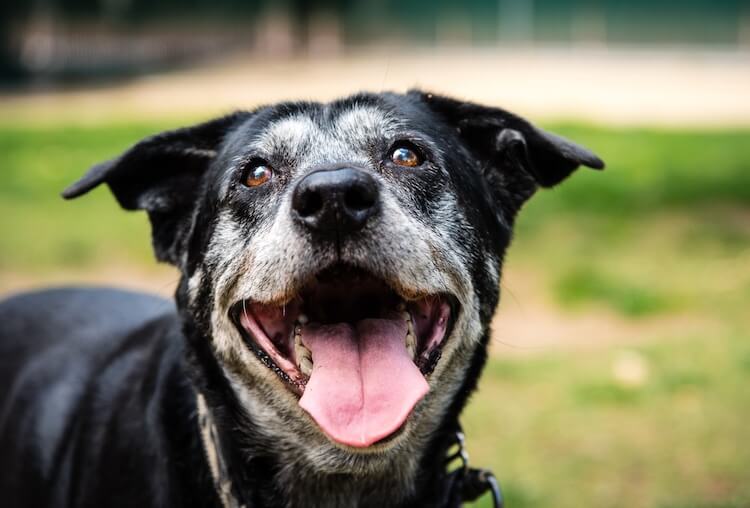
Aging is an age-dependent decline in physiological functions (i.e. a dog’s body just doesn’t work as well as it used to).
It is widely accepted that dogs are classed as senior anywhere between five and ten years old. For most dogs, this is over the age of seven. Senior and geriatric dogs noticeably slow down and may be intolerant of exercise or develop limited mobility.
Conditions like arthritis and kidney issues are commonly diagnosed around this age. They may also gain excess weight or develop new lumps and bumps.
A dog’s cells have worked hard and are now becoming limited. They are less able to divide and multiply, so repair and recovery are much slower too. As your dog gets older bones and tissues degenerate and brain cells die too.
To what extent, and how quickly dogs age, is affected by a whole host of different variables:
- Parental genes will determine your puppy’s lifespan (i.e. how healthy their parents are)
- The environment has a huge impact on a dog’s age too (e.g. toxic pollutants can negatively affect cell structure and aging process)
- Nutrition and deficiencies in your dog’s diet can lead to cell damage and rapid aging.
The first year of a dog’s life takes them through the equivalence of puberty in a human. A one year-old puppy is the equivalent to a 15 or 16 year-old teenager. This makes you realize how important training and socialization is when they are young.
What’s The Difference Between Human Years and Dog Years?
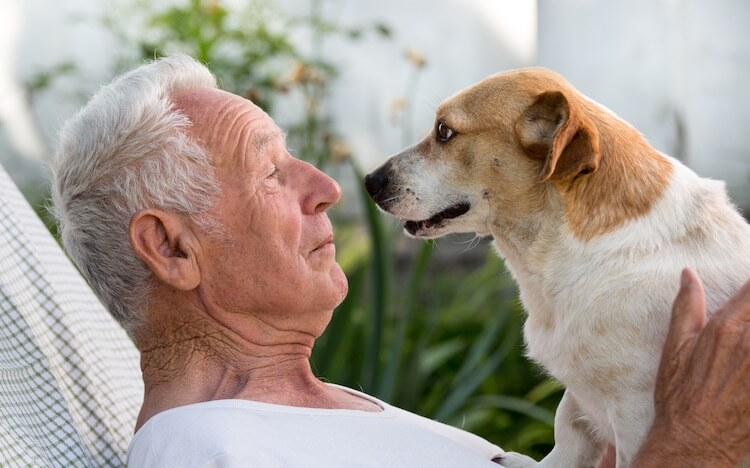
For those of you who want to convert dog years to human years, but don’t like the simple one dog-year is the same as seven human-years, there is a more accurate scientific formula.
Researchers matched the chemical reactions in cells and tissues from humans and dogs to see when the aging cells matched. They found similar processes occurring in a 7-week-old puppy and a 9-month-old human baby.
As a result of this research they proposed a dog year equals 16 x the natural logarithm of a dog’s age plus 31.
For example, a 12-year-old dog would have a natural logarithm of 2.48. You then multiply this by 16 = 39.68 + 31 = 70 years old.
The issue with the formula above is that the research was carried out on just a Labrador Retrievers. We know that large dogs age faster than small dogs, so how is it fair to apply this formula to all breeds?
It also doesn’t allow for environmental factors such as diet and fitness levels of a specific breed.
Do Different Breeds Age Differently?
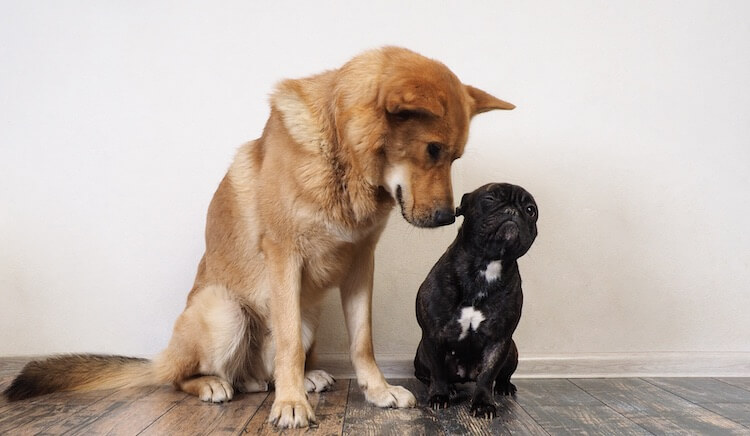
As different dog breeds mature at different rates, it stands to reason that they will also age at different rates.
Smaller dogs tend to age slower than larger breeds. After 10 years, a small breed will be around 56 human-years compared with 66 human-years for giant dogs..
Because large dogs undergo such rapid growth, their cells are challenged more than smaller breeds. Large puppies have faster metabolisms, growing faster and requiring more energy than small breeds. The more energy a body produces the more free-radicals it makes and as we know, escaped free-radicals contribute to aging.
There are also breed-specific variables that will determine how fast a dog ages. Many breeds are more susceptible to arthritis and orthopedic issues. The resulting degeneration causes pain and mobility issues.
It is well established in human-studies that physical activity reduces the rate of cognitive decline. The reluctance to explore and exercise due to limited mobility is also a concern for the dog’s cognitive function.
Do Neutered Dogs Age Differently?
Many studies suggest that the early-neutering of a large breed dog increases the risk of certain joint disorders and cancers. Hip and elbow dysplasia along with cranial cruciate ligament tears are 4-5 times more likely in neutered dogs than intact dogs.
However, a 40,000 sample of dogs suggested that those who were neutered, lived on average 9.4 years, whilst those left intact had an average lifespan of 7.9 years.
Neutered dogs were more likely to die from cancer or an autoimmune disease, whereas intact dogs were more likely to die from infectious disease and trauma.
Guessing How Old A Dog Is

For those who are lucky enough to have a shelter dog, their history is unknown. Along with this, is their age in human years so you won’t be able to use a dog age calculator. There are a three tell-tale signs which you can use to sensibly guess the life-stage of your rescue:
- Look At Their Teeth
More relevant to puppies and juniors, a puppy’s baby teeth should erupt by three to six weeks old. Their adult teeth will appear around five months of age at the front and the molars around seven months. As dog’s enter their senior and geriatric years their teeth become worn and will have a flat tip instead. You may also notice the yellowing of their teeth. - How Much Do They Walk and Eat
As a dog ages, they often become less mobile. They may be reluctant to walk or even mooch around in the yard. They may start to gain weight with the limited exercise too. Some dogs also lose their appetite as they age because if they are less active, they need less energy to fuel them. - Look At Their Fur
The lay of the coat can also indicate a great deal about your dog’s health and age. Dogs who excessively chase balls will often have swirls of hair along their back or around their shoulders; or hair that just kicks up the wrong way. Even those who don’t chase excessively, as they age, they may become a little tight or hold themselves differently to accommodate pain or mobility issues; shoulder swirls are incredibly common in the older pet!
Summary
We know that smaller dogs on average live longer than larger breeds, and that larger canines metabolically age faster than smaller pets.
While there is a formula based on the matched chemical processes from both humans and dogs, this doesn’t always ring true because there are so many factors that contribute to the aging of dogs:
- The life that your dog leads
- How active they are
- Their environment
- Their genetics
- What they eat
- Their size and breed
To accurately determine your dog’s age you are best to use a calculator. There’s a little bit more to understanding dog years and human years than meets the eye; and it’s not quite as simple as the seven-year rule after all!



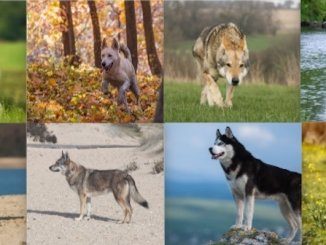
I have a 14 year old (human years) Aussie who was born with hip dysplasia. We live in a two story house and despite the onset of arthritis, we found that multi-vitamins, glucosamine & chondroitin, good controlled k-calorie food and NOT limiting her activities has kept her pretty healthy and happy. She does get massages when stiff. I agree whole heartedly with you and would just add that a positive happy environment helps too!